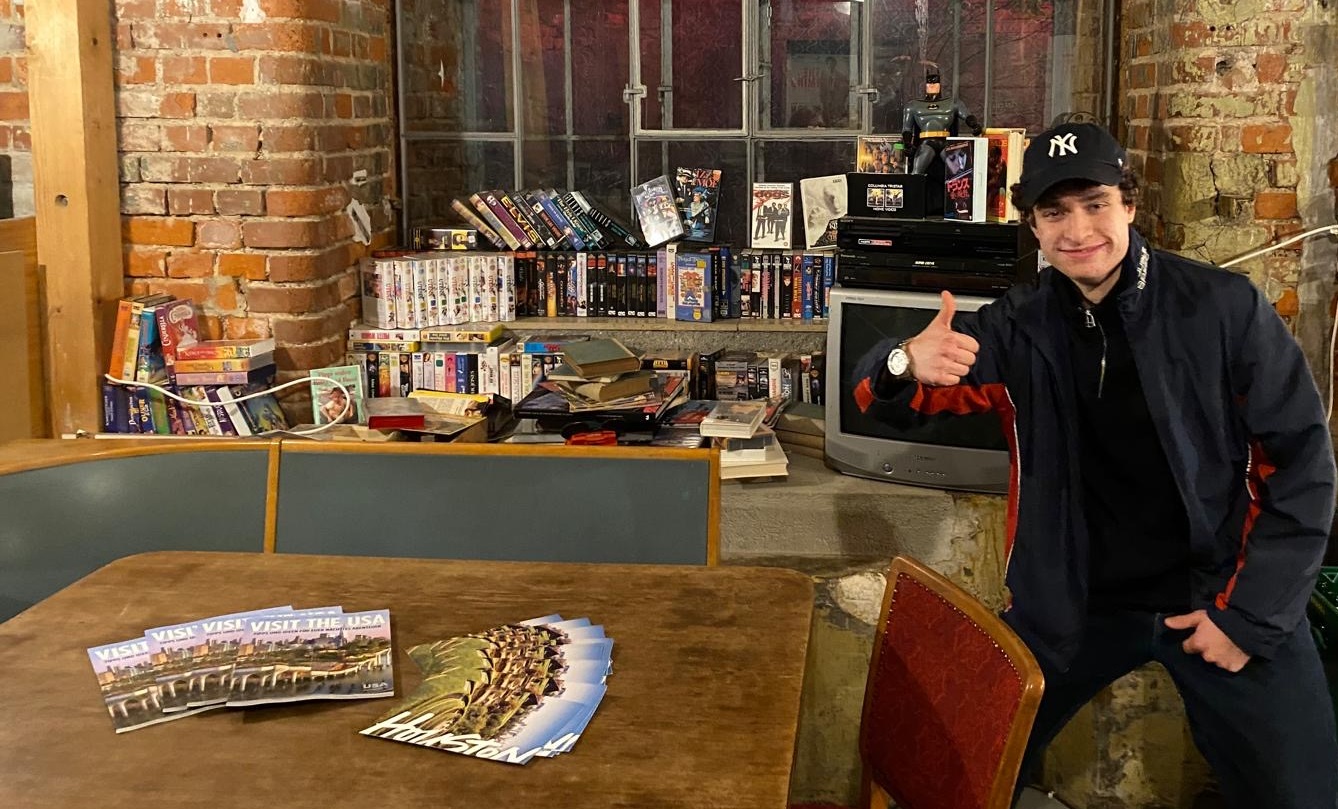
On 25 September, the 12th-grade English Advanced Course was up for quite a ride – straight to Houston, Texas – through a film named “Urban Cowboy“. The film, directed by James Bridges, tells the story of Bud Davis and Sissy, a young couple from the South of the USA and their dramatic love story. However, as the story unfolds, it becomes clearer that “Urban Cowboy“ is much more than a romance. It unfolds a picture of the Southern working-class life, its traditional gender norms and the Cowboy culture of the late 1970s.
What to know beforehand: Being a member of the Leipzig-Houston Sister City Association, Ms. Alvermann took the chance to give us an insight into Texan culture through a unique external encounter. Two lovely representatives from our Sister City Houston educated us on the real historical and cultural context of cowboy culture back in the day. Although “Urban Cowboy“ was adapted by Hollywood into a romantic drama, the movie only reflects the real cowboy culture of Texas to a certain degree. In reality, a large number of early American cowboys were black, as well as Mexican and Native American, but this historical fact is often overlooked in popular media. Hollywood versions mainly focus on white working-class people. Keeping that in mind, we can continue with our report.
In Germany, cowboy life isn’t something we deal with or think about in our daily life. At first, many of us were skeptical, influenced by cliches and the usual stereotypes. The film helped us realize that this adventurous world is in fact real and rooted in working-class life and not just Hollywood Fantasy.
While the film initially shows a romanticized perspective of cowboy life, it also exposes the dark side of it. Male dominance, aggression and abusive behavior are normalized in this world. The young main couple’s relationship highlights this. Despite Bud being emotionally and physically abusive towards Sissy, she stays with him, hoping he has finally changed forever. Other male characters, like Wes, embody a toxic, typical player version of the cowboy persona, using charm to mask harmful behavior. Women are supposed to obey, forgive and do free labor. If they don’t, the punishment will be severe in most cases.
While talking about society and gender norms, the film also reveals one of the most iconic aspects of cowboy culture – the mechanical bulls at Gilley’s Club. In the movie, bull riding is a symbol of masculinity, courage, skill and pride. But it’s also a communal experience. The cheering, competing and watching the brave bull riders brings people together and strengthens the sense of community. And that’s exactly what the real southern cowboy culture has always been about. This lifestyle has always emphasized collaboration, shared responsibility, and a strong sense of brotherhood.
All in all, our English class enjoyed the “Urban Cowboy“ trip 🙂
Shoutout and thanks to our Sister City Houston and the LURU Kino – cowboys out!
Text: M. Gogishashvili (LK Englisch), Bild: L. Pohlmann